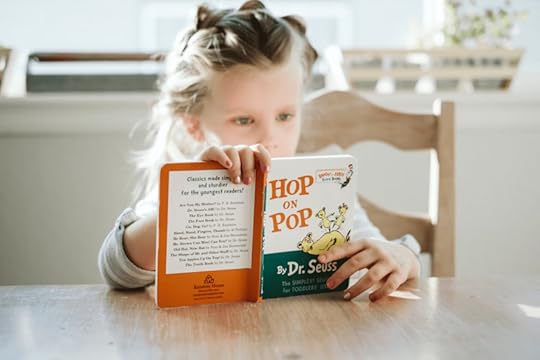Educational Books for Kids: Fun Ways to Learn Through Reading

Reading plays a huge role in how children learn and grow. The right books can help kids pick up new skills, build curiosity, and develop a love for knowledge. Parents often wonder what types of books can support both fun and learning at the same time. That’s where educational books for kids come in. These books mix entertainment with lessons that stick, making reading both enjoyable and useful.
In this article, we’ll explore how different kinds of kids learning books can shape development, what makes some of them the most educational books, and which ones are best for specific ages.
Why Educational Books MatterChoosing the right reading material for children is not just about fun—it’s about learning too. Children’s educational books provide more than just stories. They:
Strengthen reading and comprehension skills.Build confidence in early learning stages.
Introduce new ideas about science, math, or history.
Encourage problem-solving and creativity.
The importance of kids educational books cannot be overstated. They help children connect learning with real life and make the process less stressful.
Types of Learning Books for KidsThere are different kinds of learning books for kids, and each category plays a role in building knowledge. Parents often find it helpful to know which type suits their child’s stage.
Leveled Readers – Simple sentences for early learners. Examples include Bob Books or Nora Gaydos Readers.Easy Readers – Slightly longer with humor and colorful illustrations, like Mo Willems’ Elephant and Piggie series.
Early Chapter Books – Short chapters for children who are moving past picture books. Series like Henry and Mudge or Frog and Toad are great choices.
Interactive Books – Activity-based books like Brain Quest or Usborne Big Book of Science Things to Make and Do.
Subject-Specific Books – Titles like The Magic School Bus series for science or Math Curse for math learning.
By mixing formats, parents can make reading time exciting and educational.
Practical Help for ParentsFinding time to pick the right children’s learning books can be hard, especially for busy parents. Sometimes you might need support in balancing your child’s reading routine with your own responsibilities. Many parents find a reliable solution for your college papers free up time, allowing them to focus more on their child’s reading habits. Managing both your own work and your child’s education becomes easier when the load is balanced.
Educational Books by AgeDifferent stages of childhood require different kinds of educational kids books. Here’s a quick breakdown:
Age GroupBook ExamplesFocusAges 0–3Nibbles: Colors by Emma YarlettColors, visuals, sensory learningAges 3–5Billie B. Brown series by Sally RippinEarly social skills, simple wordsAges 5–7Elephant and Piggie by Mo WillemsFluency, humor, friendship themesAges 6–8Magic Tree House series by Mary Pope OsborneEarly history and science conceptsAges 9–12The Penderwicks by Jeanne BirdsallComplex themes, longer narrativesAges 5+Math Curse by Jon Scieszka and Lane SmithMath in daily lifeAges 7+Extraordinary Lives seriesHistory and biographiesThis table highlights that there are educational books for 5 year olds that match their learning speed, as well as titles for older children that dive deeper into topics.
Books About Learning in Everyday LifeChildren often learn best when they see lessons in everyday situations. Books about learning help kids understand math at the grocery store, science in the kitchen, or kindness in friendships. Titles like Wonder by R.J. Palacio encourages empathy, while The Story of Ferdinand teaches individuality.
For parents who juggle higher education with family life write my dissertation online resources can save valuable time. This balance makes it easier to introduce the most educational books to kids while staying on top of personal academic goals.
Encouraging Reluctant ReadersSome children resist reading, even with childrens educational books. The solution often lies in choosing books that fit their interests. Graphic novels, interactive activity books, or titles tied to their hobbies work wonders. For example:
Kids who love animals may enjoy the Lulu series by Hilary McKay.Reluctant readers often respond well to Diary of a Wimpy Kid because of its humor and illustrations.
Nonfiction books allow children to explore without feeling pressured to read cover-to-cover.
Making reading a family activity also helps. When children see parents and siblings reading, they are more motivated to try themselves.
Most Educational Books for All-Round DevelopmentParents often ask: Which of the following skills is at the core of most business activities? The answer is communication. Similarly, in reading, the most educational books are the ones that build both academic and emotional skills. Look for titles that combine clear storytelling, practical lessons, and space for imagination.
Some examples include:
The Name Jar by Yangsook Choi – Cultural appreciation.Last Stop on Market Street by Matt de la Peña – Social awareness.
The Magic School Bus series – Science learning through fun stories.
These are not only educational children’s books but also timeless lessons for life.
Final ThoughtsThe right childrens educational books can shape how kids see the world, improve problem-solving, and encourage curiosity. Whether you choose educational books for 5 year olds, fun picture stories, or more advanced series, the goal is to make reading an enjoyable habit. A mix of kids learning books—from interactive to subject-based—helps balance fun and growth.
Parents who introduce kids educational books early create confident learners who see reading as more than just homework—it becomes part of who they are.
The post Educational Books for Kids: Fun Ways to Learn Through Reading appeared first on Geek Mamas .



